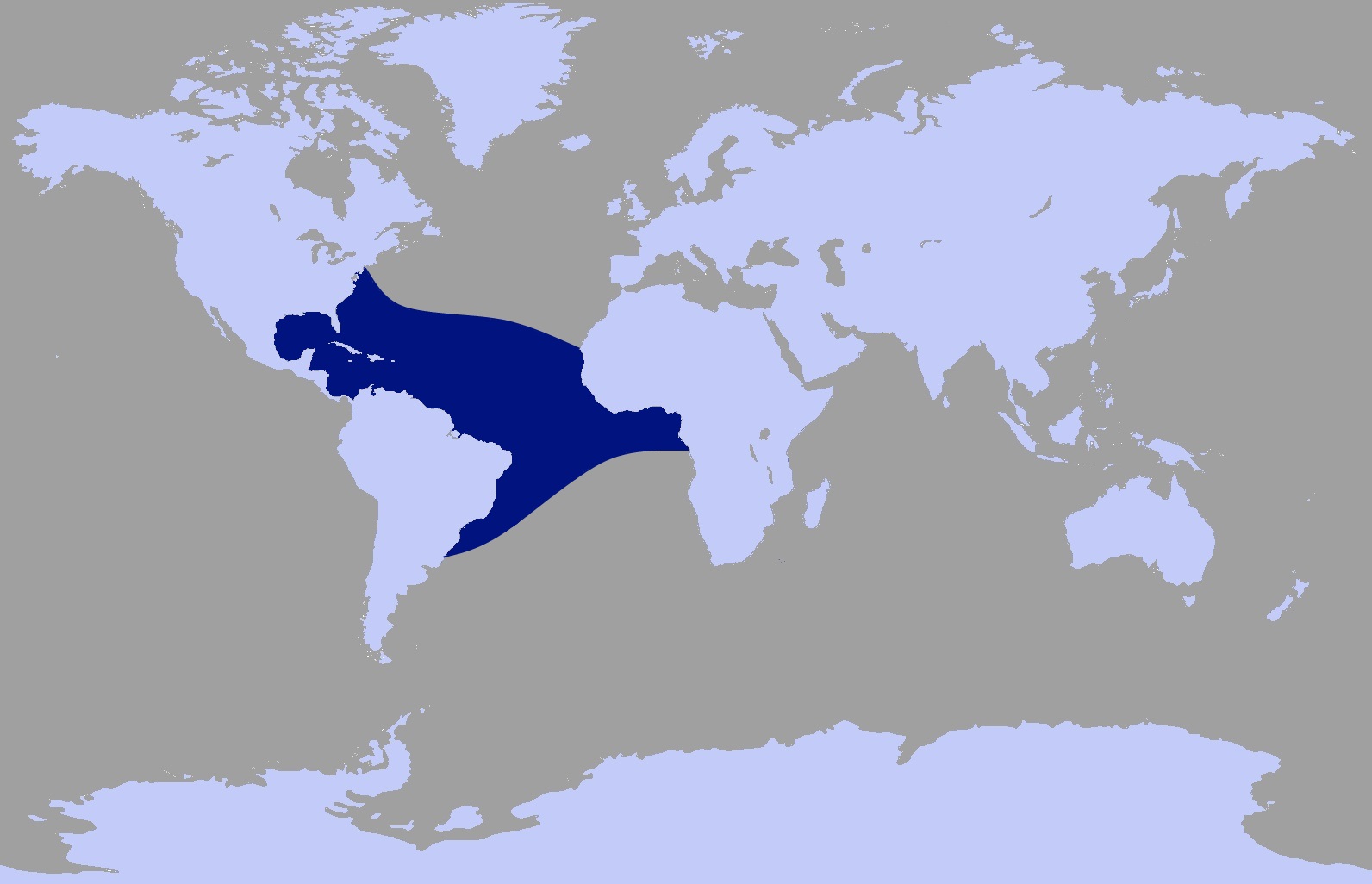Clymene Dolphin
Stenella clymene

Classification Other Names: Short-snouted Spinner Dolphin, Helmet Dolphin, Senegal Dolphin. Suborder: Odontoceti Family: Delphinidae | Description Clymene's are fast swimmers which often bowride but can be shy in some areas. Some have been seen spinning similarly to Spinner Dolphins but their spins are usually more awkward and often incomplete rotations.
|
Clymene Dolphin Ecology Range: The Clymene Dolphin is found in the tropical and subtropical waters of the Atlantic. Usual Habitat: Usual group size: 5 - 50. Main Diet: Mesopelagic fish and squid usually caught at night at moderate depth. | Global range of the Clymene Dolphin
Clymene Dolphins are likely to be found in the dark blue areas |
Conservation Information
Protection and Conservation Status
IUCN Conservation Status: Clymene Dolphins are listed as "Data Deficient" on the IUCN red list. SPAW Protocol: Clymene Dolphins are cetaceans, which are listed under Annex II of the SPAW protocol. As such they require total protection under article 11 of this protocol which prohibits the "taking, possession, killing and commercial trade of the species, their parts or products". The SPAW protocol was created to help with the implementation and promotion of the Ramsar Convention and the Convention on Biological Diversity. The Annexes of the SPAW protocol can be found here. Local Laws: Cetaceans are protected under the Conservation of Wildlife Act of Trinidad and Tobago which offers protection to all species not listed under the second or third schedules of this act. |
Reports of Clymene Dolphins in Trinidad and Tobago
There are currently no reports of this species in Trinidad and Tobago.References
The above information was obtained from the following sources:
- A Princeton Field Guide: Whales Dolphins and Other Marine Mammals of the World by Hadoram Shirihai and Brett Jarrett (2006)
- Smithsonian Handbooks: Whales Dolphins and Porpoises by Mark Carwardine and illustrated by Martin Camm (2002)
- The Whale and Dolphin Conservation Society's Species Guide at http://www2.wdcs.org/species/index.php
- The IUCN Redlist at http://www.iucnredlist.org
- The SPAW protocol Annexes with links available at http://www.car-spaw-rac.org/?Annexes-of-the-SPAW-Protocol,83
Acknowledgements
We would like to thank the following people for the use of the art work and photographs:
- Alësha Naranjit (Illustration of Clymene Dolphin)
